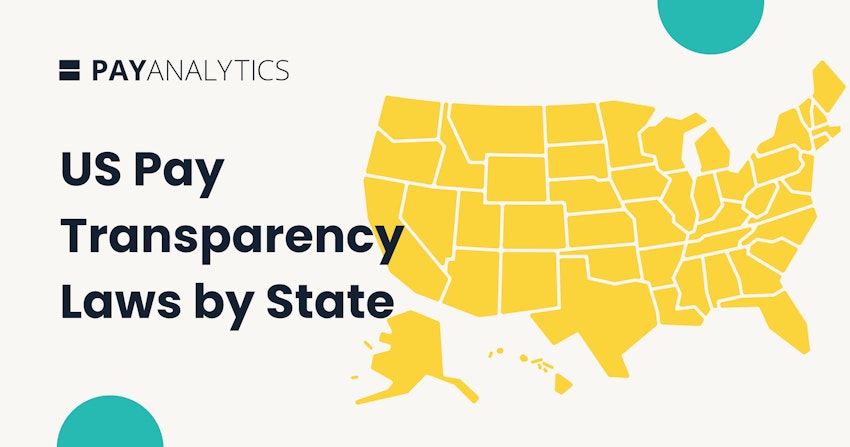2024 Resolution: Build Your Fair Pay Philosophy

“We’ve gotten really good at defining our goals, bringing in the data we need, analyzing that data, and measuring those outcomes. We can truly measure how we're doing in black and white. The thought is to take those learnings and apply them to broader DEI efforts, such as goal-setting,” Margrét Bjarnadóttir, co-founder of PayAnalytics, said, opening 2023 with a powerful resolution to carry us forward into the new year.
This year in Coffee Talks, we worked through the reasons – and we hope our many avid listeners did, too – that a goal-oriented pay philosophy is the fundamental groundwork for pursuing and sustaining fair pay. When we set the goal, we see the goal; we draw a chalk line to it. Since our goals may change overtime as we refine our compensation philosophies and structures, the path that line traces may change: But it remains a guide to navigate by. From an operational standpoint, grounding action in concrete principles (even if you’re just starting out) is fundamental to achieving and maintaining pay and workplace equity.
A lot of elements are at play when we begin to establish (or re-commit to) our organizational goals and the philosophies that support them. Henrike von Platen, of FPI Fair Pay Innovation Lab, and Margrét Bjarnadóttir, of PayAnalytics, elucidated many of these factors in their 20 Coffee Talks of 2023. They offered new perspectives from special guests from far and wide. Together, they explored topics as diverse as landmark legal disputes, pay equity communications, the promotion and potential divide, multinational employers, and so many others.
In this blog, we’ll cover a few “memorable moments”, but we encourage you to subscribe to our newsletter and to surf over to our Coffee Talk page to browse all 56.
Taking the long view of pay philosophy and practice

As we set pay equity goals, we must start from a place of awareness.
If we write down and keep track of our pay philosophies – define what factors we value, our modeling approach, and how we operationalize them at scale – we create an environment where employees feel valued – where those at all levels of seniority and ability have something to strive for. At the same time, we cut down on the complexity of a burgeoning operation by reducing arbitrary and/or ad-hoc salary decision-making. If we apply standardized pay factors consistently and allow for nuances across countries (for example, aligning compensation with union contracts), we set a positive cycle of fairness in motion at our organization that we and our successors can uphold well into the future.
In general, we can ask ourselves four main questions as we begin to record our pay philosophy:
- What do you want to pay for within the company?
- How do you want to determine pay (for example, do you prioritize equal pay, market pay? Fairness or cost?)?
- Which factors do you want to compensate based on, such as experience, education, or performance?
- What is your compensation mix? This includes base pay, short-term and long-term incentives, pension plans, insurance, and other factors.
Certifications help set pay policies
One way to keep your eyes open is to pursue certifications—which are a “warrantied” stamp of certification that demonstrate an employer’s commitment to fair pay and showcase their efforts to achieve equality. They’re the “car inspections” of the world of fair pay, and signal to financial markets, increasingly competitive job markets, and employees that you’re an equitable employer in word and deed. The “third-party effect” of these programs also incentivizes you, as an employer, to roll out and maintain fairer compensation practices.
The third-party effect of certifications is threefold:
- Companies have a set of standards to pursue and an incentive to do so (this can also help with determining and setting KPIs).
- Certifications are often annual, which means you’re continuously monitoring yourself over the lifetime of your organization.
- External and internal reporting create additional layers of accountability.
Certifications also offer an opportunity for “best practice sharing” among certifying bodies and employers, which accelerates fair pay journeys. The certifiers can give employers pointers on what others are doing well; for example, at FPI Fair Pay Innovation Lab, which offers the Universal Fair Pay Check Certification, quarterly best practice exchanges are offered.
Making fair pay pledges through organizations like the Equal Pay International Coalition (EPIC) can also help employers to define and elucidate goals, such as:
(1) Monitoring pay equity with global consistency;
(2) Removing bias from the system;
(3) Creating pay transparency; and
(4) Achieving gender balance in management within 1-2 years.
Setting pay equity KPIs
For many companies, the foundational KPIs they need to report on are unclear, though they are often co-engineered with DEI indicators. Employers often report the absolute, or unadjusted, pay gap, which is a bit like comparing apples-to-oranges, rather than the adjusted (which is apples-to-apples). The unadjusted pay gap is a calculation of the percentage difference between the average or median pay of each gender without accounting for objective factors like job role, education level, work experience, and managerial responsibilities.
Some employers are communicating another piece of this story: The adjusted pay gap. By reporting on this pay gap, companies really communicate which factors or variables they’re accounting for in their model, which speaks to their pay philosophy and the hard work they’ve put into building fairness into their everyday pay practices. Seniority, experience, education are all valid determinants of pay, factored into the adjusted pay gap, that move the conversation away from abstractions into the world of concrete practices; and that’s the sweet spot.
Fairness is an environment that flourishes under the right conditions

“DEI is a journey; you always need to have your long-term view. But you [also] need to raise awareness, [take] a holistic approach, work on policies and practices, work on figures…” Salomé Germain Tringano of Arba Advisory said in our first Coffee Talk of 2023, setting the tone for the year ahead. “So it’s really about keeping an eye [out] and an open ear.”
Pay equity and pay transparency shape your organization’s ecosystem—satisfaction, access, representation, costs, opportunity—by creating a workplace that emphasizes employee well-being, both in the numbers and other arenas, such as opportunities for professional growth.
In reporting best practices, representation has also taken center stage in internal and external communications— employers are no longer just looking at overarching diversity, but also zooming in on managerial roles, too.
“Companies are increasingly understanding and monitoring the hiring, attrition, internal mobility, employee satisfaction, and resources that they expend on DEI issues,” Margrét noted. This helps to build a fuller picture to gauge progress against.
Finding and addressing unconscious bias
Measuring pay gaps can expose implicit bias in our organization and its pay structures. But identifying and rooting out latent bias is, by nature, nuanced: It’s difficult to respond to something you can’t see.
“We all know that we have our unconscious biases,” Henrike von Platen begins in Coffee Talk #44, “Whether it's female versus male, or white versus black, or old versus young, or one of many other categories,” our background, cultural context, and social circumstances influence how we automatically view others. Our preconceived notions are self-perpetuating. Left unchecked, they insert themselves into critical processes, leading to unequal treatment.
“What we find is that a lot of women are concentrated into this one box of being high performers with low potential,” said Coffee Talk #37 guest Alan Benson, an Associate Professor in the Work and Organizations Group at the University of Minnesota's Carlson School of Management.
In a 2023 study, Alan found that managers systematically underestimate the potential of female direct reports. They’re 50% more likely than men to be labeled high performers with low potential. That means they aren’t promoted as frequently as men. Benson’s study suggests that implicit bias influences manager evaluations, which may prevent many women from pursuing advancement and development opportunities.
“But even when they do get promoted,” Benson went on, “they turn out to do pretty well, they turn out to be pretty good managers.”
Landmark gender pay discrimination cases lead to reform
In real life, implicit bias can reduce salary by thousands of euros per year, which translates to hundreds of thousands of euros lost across a career and in retirement through pension payments.
Gabriele Gamroth-Günther spent over a decade in her role as a department head at a large insurance company in Germany. But when she asked her employer about her pay, she learned that she was paid 1,600€ less than her male colleagues—every month.
Her immediate assumption was that her employer would realize their mistake and make amends by correcting her pay.
But they did nothing.
She took legal action against the company in Germany’s federal court in a landmark case that changed legislation in the country. After the court ruled in her favor, the burden of proof in pay discrimination cases shifted from the employee to the employer, meaning the employer now has to prove there isn’t discrimination. This lines up with the EU Pay Transparency Directive’s approach to discrimination cases, in which the employer must bear the burden of proof.
“We don’t get further if we don’t use the laws that are already there…”
Likewise, Astrid Siemes-Knoblich, who served as mayor of her town in southwestern Germany discovered after her time in office that both her predecessor and her successor—both men— were paid more than she was. The town council defines the salary bracket for mayor based on variables like job conditions, town size, and level of complexity. These conditions were the same for Astrid as they were for her predecessor and her successor.
As a result, Astrid took her pay discrimination case to court. After two years of fighting, she won the case on March 3, 2023.
Court cases like hers—and like Gabriele’s—are particularly valuable because they make pay inequality visible.
“When we don’t talk about it, then the next generation doesn’t know,” Astrid says.
How to build a multinational compensation structure
You want your employees to have the same standard of living, no matter where they are. An employee who lives in Munich may earn more than one who lives in Berlin, where the relative cost of living is lower. When you add remote work to the equation, matters become more complicated. To achieve and maintain pay equity, you need to ensure that compensation across countries, provinces and states, and cities is fair and equitable.
In building out the qualities they value in employees, global organizations often find themselves struggling to create a model for making pay decisions that’s symmetrical and universal. Some companies apply a blanket approach. Others choose to identify their principles and direct branches to include variables that align with those principles (A, B, C) in their model. They can then layer in additional factors (X, Y, Z) that the company has agreed are fair when applied consistently. The result is global cohesion with cultural sensitivities.
Critical to determining how you’ll compensate at a globally distributed organization, irrespective of size, is understanding your underlying pay philosophy. “You really need to think: ‘What is my organization?’ ‘What is my pay philosophy?’ and make decisions based on the modeling approach” that makes the most sense for your employee population.
Interested in exploring particular topics we’ve covered throughout the year?
We’ve pulled together a simple table to help you choose the topics that are most pressing for you, organized by theme. Happy listening! Here’s to 2024! (If you want to start 2024 with a bang, drop one of our pay equity specialists a line).
Coffee Talks 2023
Friday Coffee Talk from Planet Fair is a podcast/videocast series co-hosted by PayAnalytics founder Margrét Bjarnadóttir and Henrike Von Platen, founder and CEO of the FPI Fair Pay Innovation Lab in Berlin. It is available through all podcast platforms as well as on YouTube as a videocast.





